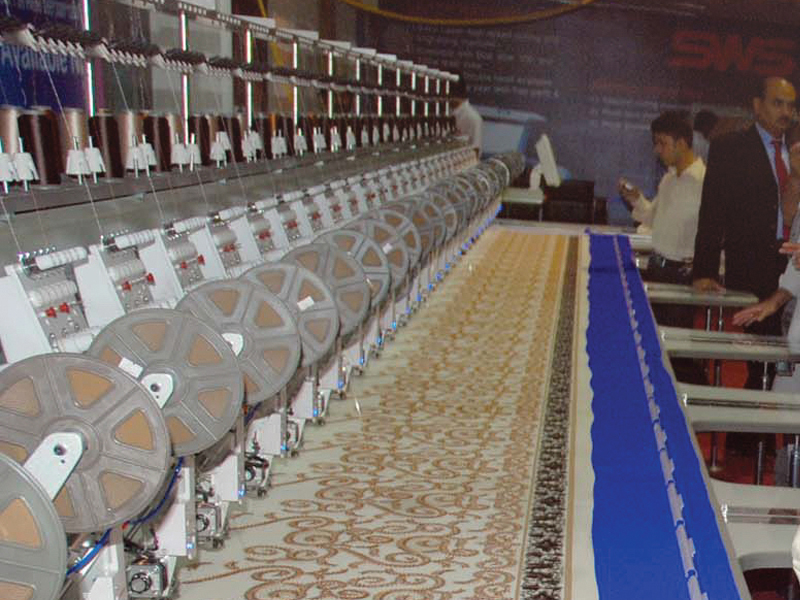
In the country, very old ginning machines, textile power looms, printing presses, grain milling units and leather processing facilities are still in operation. As a result, it faces higher-than-world average wastage and lower per-unit production in all these areas of manufacturing.
Replacement of old machinery with the latest ones requires a timely assessment of whether old machines are still worth keeping and a smart projection of return-on-investment of the intended replacement. That, in turn, not only requires capable engineering staff but also a farsighted management.
Lack of new technology turns national economy obsolete
Unfortunately, in Pakistan, the work culture in many industries is Seth-oriented, leaving little room for expert engineers and qualified managers to give honest feedback, let alone take independent decisions. That is the main reason for industrial backwardness.
But before we move on to some other reasons, let’s have a look at some statistics that are revealing. In Pakistan, the percentage of trash produced during cotton ginning is 8% against 6% in India. That explains, at least partly, why Pakistan’s ginning output, a standard to measure ginning productivity, is 34% against India’s 42%.
If the wastage and productivity of other processing industries are looked at, a similar pattern can easily be spotted. Time and again, this point is intensely debated in policymaking circles.
But little effort is made to reach the root cause of the problem – the presence of rudimentary machinery in a large number of industrial units.
Policymakers apparently don’t appreciate this aspect of the problem and as such do little to encourage industrialists to invest more in modern machinery. And, how can they take this course, if they don’t know details of the kind of machinery still being used in many of the country’s industries.
Bureaucrats don’t let them know. Readers will be surprised to know that, as part of the agricultural census of 2010, there are some statistics available for the agricultural machinery but details of the industrial machinery in terms of their age and redundancy are missing.
Or, if the Ministry of Industries and Production claims it has those details, it has so far not bothered to share it with the nation. So, the second reason for industrial backwardness is that the bureaucrats don’t feed policymakers with the information they really need the most.
In the absence of dependable data on the available stock of industrial machinery, yearly foreign currency spending on imports of such machinery can be a helpful proxy to understand how quickly industrialists are replacing old plants and machines with the new ones.
So, let’s have a quick look at it. In FY19, Pakistan spent $8.92 billion on the import of materials that the Pakistan Bureau of Statistics (PBS) categorises as machinery against $11.7 billion in FY18.
This huge decline is attributable chiefly to rupee depreciation because in rupee terms the import bill did not see such a big fall. In FY19, such imports cost Rs1.212 trillion against Rs1.273 trillion in FY18.
Pakistan can learn from China’s tech advances
But a more important issue is that except for three categories of machinery ie textile machinery, agriculture machinery and construction and mining equipment, all other types of machinery imported are not used exclusively and extensively in the industrial value chain. Imports of mobile phones and office machinery are two handy examples.
Clearly, there is a need for stocktaking of available plants and machinery in use of different industries, identifying the plants and machinery that have become obsolete, replacing ageing machinery with new modern versions and formulating a policy for modernising Pakistani industries with the help of newer machinery and more modern technologies.
Unless that is done, the productivity of industries will remain low and Pakistan will fail to foster an environment of competition. Big players in a given industry will continue to grow more rapidly and smaller ones will remain content with whatever market share they have.
Skills ranking
Apart from low investment in traditionally modern machinery, the country also lags behind in investment in business skills, tech skills and data skills – the three components of Global Skills Index (GSI) that measures productivity of a nation.
Pakistan occupies a disappointing 57th position among 60 countries whose GSI rankings were released in the 2019 GSI report. China and India occupy 36th and 50th positions respectively.
Obviously, there is a need to lift Pakistan’s GSI ranking and that is possible only if investment is made in both human capital and machinery.
Whereas imparting proper training and education is essential in each of the three components of GSI, tech skills and data skills of a nation cannot improve without enough investment in latest machinery and technologies. That is where we continue to lag behind, putting future economic growth at risk.
Pakistan’s spending on education sector – which covers skills development and vocational training as well – is abysmally low at 2.4% of GDP. The public sector gross investment also stands at a humiliatingly low level of 4%, according to the recently released State Bank of Pakistan’s annual report of FY19.
The writer is a mechanical engineer and is doing masters
Published in The Express Tribune, November 4th, 2019.
Like Business on Facebook, follow @TribuneBiz on Twitter to stay informed and join in the conversation.

















COMMENTS
Comments are moderated and generally will be posted if they are on-topic and not abusive.
For more information, please see our Comments FAQ